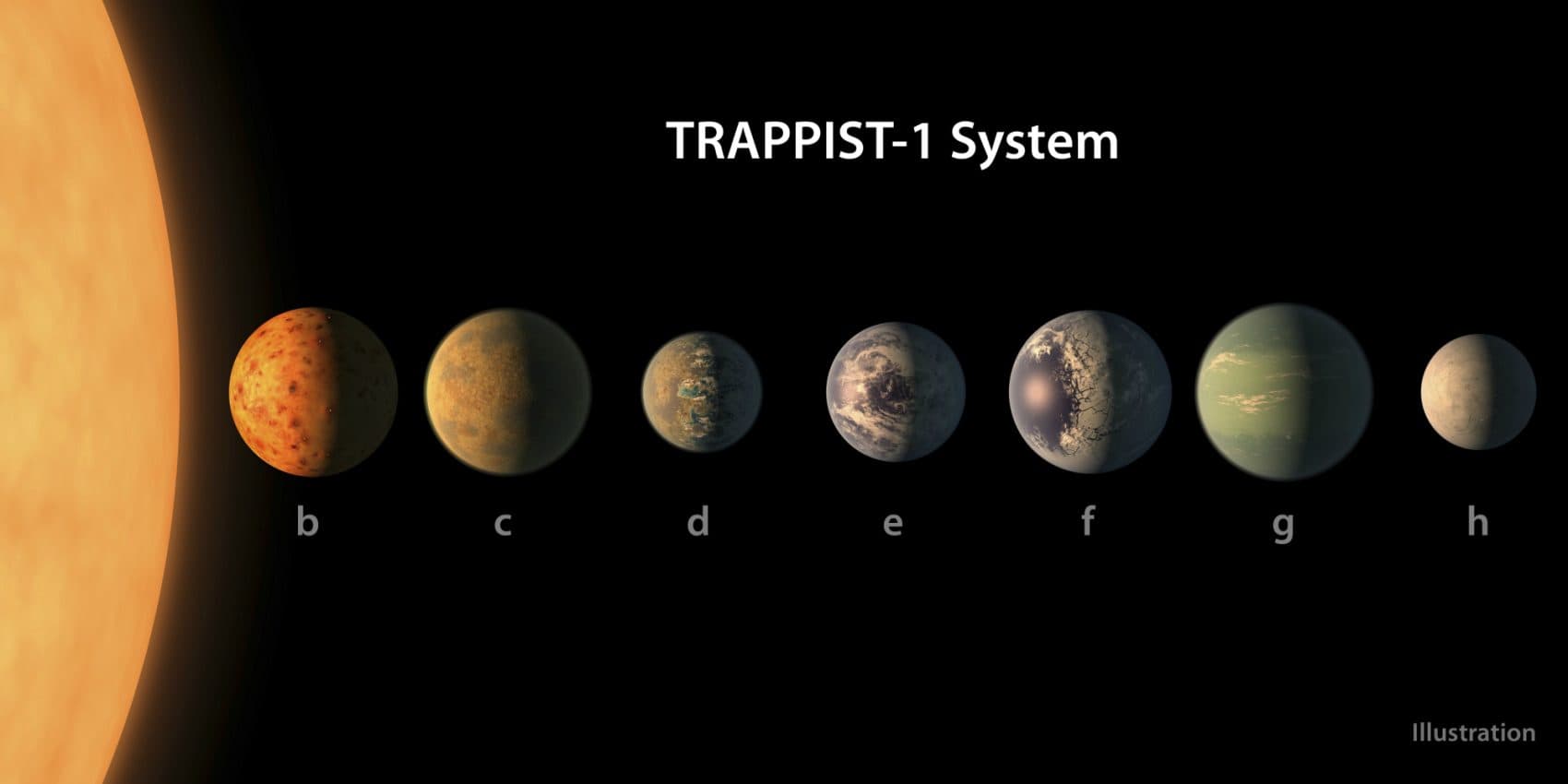Advertisement
Commentary
TRAPPIST-1 Is Only 40 Light Years Away! Wait. What?

TRAPPIST recently found a solar system with seven planets, three of which are potentially habitable. We know the galaxy teems with exoplanets — we’ve discovered over 3,400 of them so far — but one reason for the excitement around this discovery is the proximity of this system: It’s only 40 light years away.
Only 40 light years.
Exactly how far away is this system? How long would it take to get there?
A light year is a measurement of distance based on the speed of light. Light travels at 186,282 miles per second. By my calculations, that’s 670,615,200 miles per hour, 16,094,764,800 miles per day, and 5,874,589,152,000 miles per year. Thus, the TRAPPIST-1 star system is roughly 235 trillion miles away.
Traveling at the speed of light, it would take approximately 40 years to reach TRAPPIST-1...which, in cosmic terms, is a neighborly jaunt.
To put that distance in perspective, the moon is 239,900 miles away; at their closest, Mars is 33.9 million miles away and Pluto is 2.66 billion miles away; the next closest star system, Alpha Centauri, is approximately 25 trillion miles (4.3 light years) away.
But the distance is only half of the equation. The other part is how quickly a spacecraft can travel. Traveling at the speed of light, it would take approximately 40 years to reach TRAPPIST-1 (not taking relativity into account for simplicity’s sake), which, in cosmic terms, is a neighborly jaunt.
The problem is that we can’t travel anywhere near the speed of light. Most scientists believe that one-tenth the speed of light is when relativity becomes a factor, and thus may represent the upper limit, but even that may be optimistic.
Most passenger planes top out at approximately 500 mph. The fastest aircraft, the X-15 plane designed by NASA and the U.S. Air Force, hit 4,520 miles per hour. NASA’s space shuttles reached 18,000 mph. At that speed, it would take approximately 165,000 years to arrive at Alpha Centauri and approximately 1,491,280 years to reach the TRAPPIST-1 system.

If this were Star Wars, Chewbacca would set the coordinates, and we’d initiate the hyperdrive. If this were Babylon 5, we’d identify the jump gate nearest to this system and get there via hyperspace. If this were Battlestar Galactica, we’d spool up the FTL (faster than light) drive and jump.
But we have no idea how to do any of those things.
The size and payload of a spacecraft also determine its maximum velocity. A small, uncrewed spacecraft such as New Horizons, which is currently near Pluto, can travel at over 36,000 miles per hour; it arrived at its destination in less than a decade. But if it wanted to head to Alpha Centauri, the trip would take another 80,000 years. Still, there are ways we can dramatically improve our propulsion systems to decrease travel time.
One possibility is a thruster that doesn’t require conventional fuel, such as magnetoplasmadynamic thrusters, quantum vacuum plasma thrusters (Q-thrusters), and/or ion thrusters. NASA recently tested out the first two; while promising in concept, there’s still much left unknown — namely, the role of quantum forces. While this approach remains theoretical for now, its successful implementation could get crews to Mars in weeks, rather than seven to eight months, or a spacecraft to Alpha Centauri in about 30 years.
One idea common in science fiction is placing place crew members in a state of suspended animation for the long trip and then reawakening them upon arrival. While trauma centers have begun to use this approach by lowering patients’ body temperatures to induce hypothermia, buying time for surgeons to repair injuries such as gunshot wounds, there are hurdles to employing this technique for long-duration missions, as sci-fi writer Kim Stanley Robinson points out. He raises the possibility of bringing frozen embryos on such a mission or using “generation ships” on which entire generations would live, reproduce and die onboard. But those bring challenges too.
...humanity has proven itself capable of meeting seemingly insurmountable challenges. In 1903, a New York Times editorial declared that making a “flying machine” would take at least one million years... Nine weeks later, the Wright Brothers made history.
While the TRAPPIST-1 discovery is deeply exciting, both because of its proximity and because it raises the possibility that life could exist in star systems we previously thought uninhabitable, getting ourselves or our spacecraft there is an immense challenge. But humanity has proven itself capable of meeting seemingly insurmountable challenges. In 1903, a New York Times editorial declared that making a “flying machine” would take at least one million years of mechanical and mathematical collaboration. Nine weeks later, the Wright Brothers made history at Kitty Hawk. Decades later, breaking the sound barrier in flight—at least, not without killing the pilot—seemed impossible. But in 1947, Chuck Yeager did just that. In 1962, John F. Kennedy told the American people that we’d put a man on the moon before the end of the decade, despite being woefully behind in the Space Race. Seven years later, Neil Armstrong took a giant leap for mankind.
Who knows where the next leap will lead?
